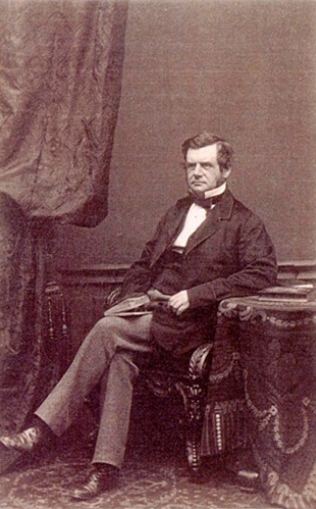The Dayrell Family
The Dayrells were gentry in Lillingston Dayrell, Buckinghamshire, but a branch of the family became prominent in Abingdon in the first half of the seventeenth century. Their significance in Abingdon’s history is as members of one of the two factions that opposed each other in the town’s institutions – the Corporation, Christ’s Hospital, the churches.
Paule Dayrell was one of the new men brought on to the Hospital’s board of governors in 1598 by Francis Little, leader of one of the factions, after a successful bout of in-fighting against his opponents led by the Tesdale family. Dayrell was Master of the Hospital in 1601, but left the town two years later and was smoothly replaced by his son Walter (1564-1628).
Walter was a lawyer of Gray’s Inn, and husband of Alice who was daughter and sister of two Thomas Mayotts, both several times mayor and politically allied with Little. He resigned as a governor of the Hospital in 1606 to become its auditor and also legal counsel to the corporation, two functions which in Abingdon normally went together. In 1610 Little was able get the town two charter revisions, one of which established it as ‘a borough of the peace’, expanding its legal functions and upgrading its legal counsel to the status of recorder. This was a significant professional advancement for Walter.
The Little faction was conservative in religion, opposed to the aggressive puritanism that was common at the time. Dayrell’s activities extended to Oxford, where the university was generally conservative. He was personally friendly with Samuel Fell, Dean of Christ Church, and became a legal advisor to William Laud, then President of St John’s and later Archbishop of Canterbury. Laud was detested by the puritans, who would later put him to death, for his insistence on traditional religious rites and ceremonies.
The memorial tablet that Alice put up in St Nicolas’ after Walter’s death in 1628 left no doubt about where he stood in the current religious controversies: ‘…the advancement of the clergy being his joy, and the beauty of God’s house his delight’. The ‘beauty of holiness’ was a Laudian slogan, and such sentiments would not have been acceptable in the puritan stronghold of St Helen’s. They also seem to have descended in the family; in 1653, Walter’s son Paule relinquished the family home at Lacies Court to Laud’s friend and biographer Peter Heylin who had been expelled from his Hampshire rectory for his work as a royalist propagandist in the Civil War.
The faction fighting continued unabated after Walter’s death. His son-in-law Charles Holloway followed him as Hospital auditor, but the post of recorder was separated off and given to a Tesdale candidate. However, Walter had started a Berkshire legal dynasty; Charles’s daughter would later marry Edward Dalby, steward (the local name for the recorder) of Reading, and her descendants were active there into the next century.
See Glossary for explanations of technical terms.
© AAAHS and Contributors 2021



 Reproduced by permission of the Provost and Fellows of Eton College
Reproduced by permission of the Provost and Fellows of Eton College




